
How are shells made?
Inspiration of shells in art and architecture?
You can see it in the logarithmic spiral of a nautilus. The milky iridescence of an abalone. The spiky turret of a queen conch. Precision, elegance, strength. The shell is a consonance of form and function that rivals and guides human creativity. From Botticelli's “Birth of Venus” to Frank Lloyd Wright's design for the Guggenheim Museum in New York, shells have inspired artists and architects throughout history. Our admiration for seashells even predates writing. Archaeologists in Israel recently unearthed the remains of a shell necklace made some 120,000 years ago.
The mystery behind how shells are made
The mysteries they hold are as enduring as our fascination with shells. How did such complex and beautiful structures come into being? Evolution by natural selection may help explain why shells spread among molluscs, but it can't fully elucidate how an individual creature constructs a skeleton as exquisite as, say, the exceptionally spiny shell of a Venus murex. To truly understand the shell, we need to examine beneath its biology the mathematics and physics that underlie it.
In recent years, the scientists who have undertaken such work have developed a considerably more sophisticated understanding of the physical forces that guide shell formation. Groundbreaking studies by Derek Moulton, Professor of Applied Mathematics at Oxford University, and his colleagues have revealed that most of the amazing variety of shellfish can be explained by a few simple mathematical principles.
The mathematical rules of shell growth explained
 Each mollusc is surrounded by a mantle, a bell-like organ that secretes calcium carbonate and mixes it with a protein scaffold to form a shell layer by layer. When a mollusk develops its shell, it adds new material to a single area: the aperture (or opening). Think of it as a circle. If, with each new layer, a mollusk deposits a ring of material the same size as the opening, its shell elongates to form a cylinder. If, on the other hand, the mollusc increases the circumference of each new ring, its shell becomes a cone. By depositing more material on one side of the opening than on the other, a mollusk can bend a cylindrical shell to form a ring. Imagine gluing a stack of deviated rings, one on top of the other - each thicker on the left than on the right. Instead of forming a neat cylindrical tower like uniform rings, they would tilt to one side - like the corners of a stone arch - and end up in a loop. By rotating the points where the mantle secretes more or less material, a mollusk can twist such a loop into a spiral tube.
Each mollusc is surrounded by a mantle, a bell-like organ that secretes calcium carbonate and mixes it with a protein scaffold to form a shell layer by layer. When a mollusk develops its shell, it adds new material to a single area: the aperture (or opening). Think of it as a circle. If, with each new layer, a mollusk deposits a ring of material the same size as the opening, its shell elongates to form a cylinder. If, on the other hand, the mollusc increases the circumference of each new ring, its shell becomes a cone. By depositing more material on one side of the opening than on the other, a mollusk can bend a cylindrical shell to form a ring. Imagine gluing a stack of deviated rings, one on top of the other - each thicker on the left than on the right. Instead of forming a neat cylindrical tower like uniform rings, they would tilt to one side - like the corners of a stone arch - and end up in a loop. By rotating the points where the mantle secretes more or less material, a mollusk can twist such a loop into a spiral tube.
How shell spines and knobs form in nature?

While these simple mathematical rules explain many of the fundamental shapes of shellfish, a more complex set of interactions generates their most ostentatious features. Spines, knobs and other ornamentation arise from a mismatch between the growth rate of the soft-bodied mollusc's mantle and its rigid shell. This mismatch creates bumps that are exaggerated with each new layer. The relative growth rate and rigidity of the mantle determine the length, thickness and curvature of these projections. Such embellishments may initially form due to a combination of random mutations and the inevitable results of mechanical forces involved in shell growth. If they prove advantageous to a creature's survival and reproduction, however, they may be perpetuated by natural selection, eventually becoming a predominant trait.
Why mollusks evolved shells?

Although we appreciate shells primarily for their aesthetic qualities, the animals they shelter value them for a more pragmatic reason: protection. Around 540 million years ago, in an explosion of evolutionary innovation known as the Cambrian Explosion, predatory animals became much more numerous and competent. Slow-moving, soft-bodied organisms were in constant danger. Marine molluscs developed simple but robust shells to protect their vulnerable tissues. In response, crustaceans, fish and other predators developed more sophisticated weapons and hunting techniques.
Finally, the co-evolution of predator and prey contributed to a spectacular increase in mollusc shell diversity. Some developed particularly large, thick shells that only the strongest or most cunning animals could crack. Narrow openings, sometimes reinforced by doors called opercules, made it more difficult for predators to gain access to the prey. Large needles enabled some molluscs to retreat even further from danger. Spikes, thorns and knobs thwarted pincers and jaws, as did smooth, slippery surfaces.
Shell formation: a balance of biology, physics, and evolution
Shells are therefore not pure constructs of biology or physics, nor can they be adequately described by mathematical modeling or Darwinian theory alone. The challenging, sculptural beauty of the shells we find so enchanting emerges from a confluence of geometry, mechanics, ecology, evolution and chance. Every shell you've ever picked up in the sand or admired in a museum is a palimpsest strewn with secrets that science is still unravelling today, a physical manifestation of the complexity and splendour of our planet.
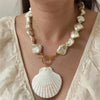

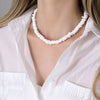
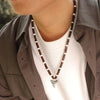

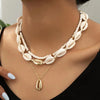
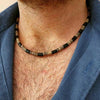

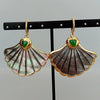


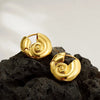



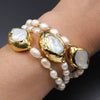
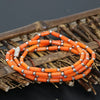

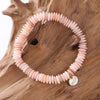

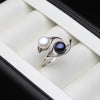











Leave a comment